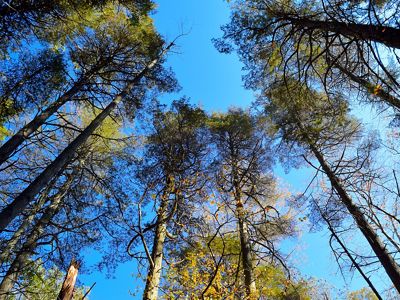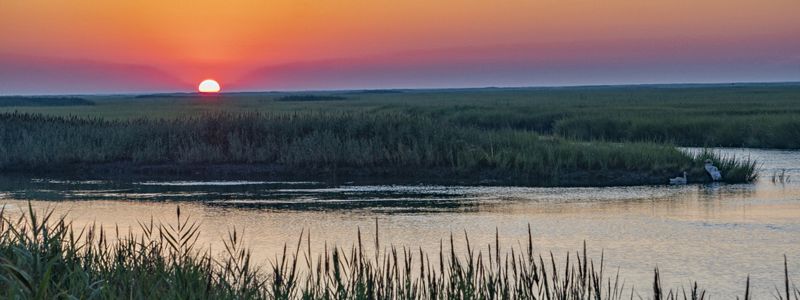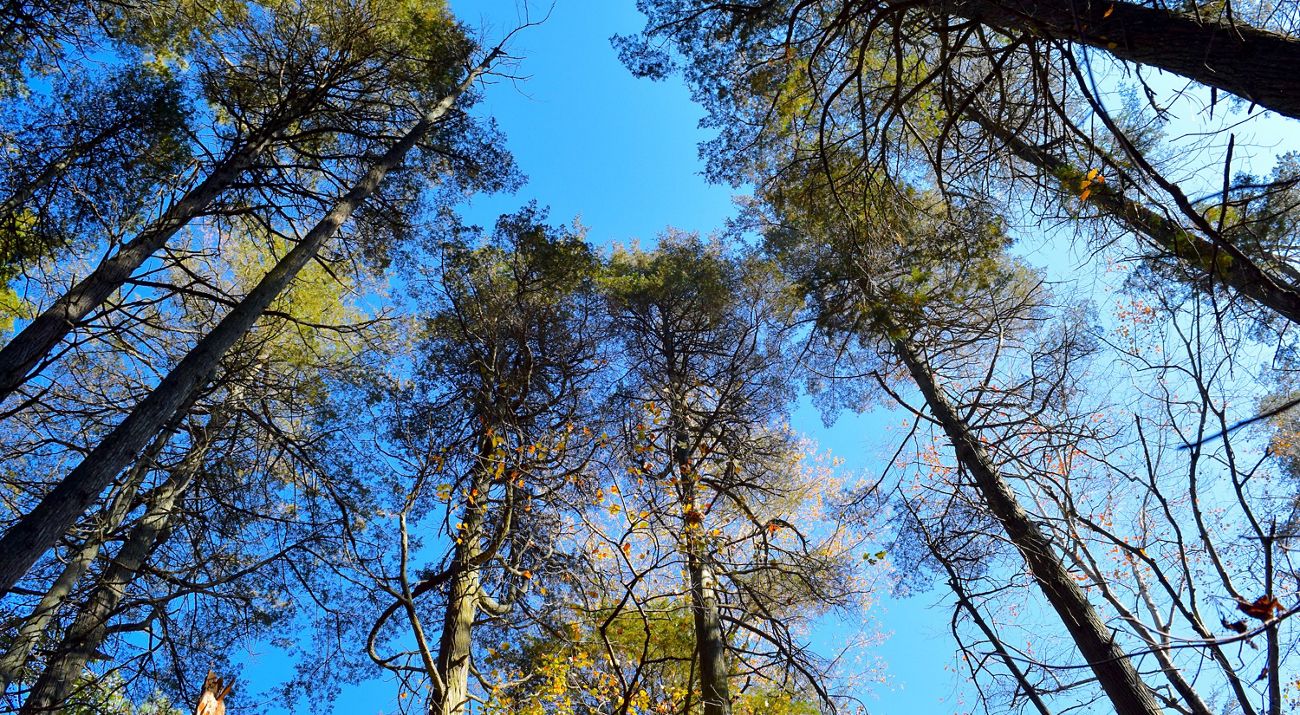Media Contacts
-
Kathleen McFadden
Media Relations Manager
The Nature Conservancy
Phone: 610-368-7108
Email: k.mcfadden@tnc.org
The Nature Conservancy (TNC) recently announced Delaware’s largest Atlantic white cedar tree can be found at Ponders Tract, a public trail system spanning more than 900 acres within TNC’s Pemberton Forest Preserve.
The Atlantic white cedar (Chamaecyparis thyoides) at Ponders Tract measures 38 inches in diameter (119 in. in circumference) at breast height (DBH), the standard for measuring tree trunk diameter 4.5 feet above the ground. Other large Atlantic white cedars recently measured across the state have ranged from 25 - 36 inches DBH.
“We are delighted to learn that this special Atlantic white cedar tree resides at Ponders Tract, one of Delaware’s natural treasures,” said Lori Brennan, Executive Director of TNC in Pennsylvania and Delaware. “Habitats with thriving Atlantic white cedars have countless benefits for both people and nature, helping to the mitigate impacts of climate change by removing carbon from the air, and providing food to a variety of insects, birds and mammals. TNC is committed to the continued protection of these critical ecosystems in Delaware and beyond.”

The conservation significance of this tree is two-fold: Atlantic white cedar wetlands are considered a globally threatened ecosystem due to centuries of development, land conversion and sea level rise accelerated by climate change.
Additionally, these trees are the host plant for rare and threatened species. In the spring of 2022, a Hessel’s hairstreak butterfly (Mitoura hesseli) was observed on one of TNC’s preserves in southern Delaware, marking this rare butterfly’s first sighting in 27 years.
“In addition to the importance of Atlantic white cedar trees for the Hessel’s hairstreak butterfly, many state and globally rare plants occur in Atlantic white cedar swamps. It’s important that we continue to protect and restore the Pemberton Forest ecosystem,” said Natasha Whetzel, Delaware Stewardship Manager at TNC.
The Delaware state botanist, who regularly conducts tree measurements across the state, confirmed that the Atlantic white cedar at Ponders Tract is currently the largest of its kind growing in a wild, natural setting in Delaware.
Quote: Bill McAvoy
Large-diameter, Atlantic white cedar trees are rare in the state due to historical logging activities, and Atlantic white cedar swamps are now only known from Sussex County, in areas such as the Ponder’s Tract.
“Large diameter, Atlantic white cedar trees are rare in the state due to historical logging activities, and Atlantic white cedar swamps are now only known from Sussex County, in areas such as the Ponder’s Tract,” said Bill McAvoy, the state botanist.
Ponders Tract, located in Sussex County, first opened for public access in 2010 after TNC transformed the site’s former logging roads into more than nine miles of trails. Earlier this summer, TNC announced a 7.5-acre expansion of Ponders Tract—its first new land purchase in Delaware since 2004. The acquisition protects the land from future development, allowing for continued ease of access for both the public and TNC conservation staff as they work to protect and restore the Ponders ecosystem using prescribed fire and other management strategies.
For more information, visit nature.org/Delaware.
Stay in Touch
Sign up to receive monthly email conservation news and updates from Delaware.

The Nature Conservancy is a global conservation organization dedicated to conserving the lands and waters on which all life depends. Guided by science, we create innovative, on-the-ground solutions to our world’s toughest challenges so that nature and people can thrive together. We are tackling climate change, conserving lands, waters and oceans at an unprecedented scale, providing food and water sustainably and helping make cities more resilient. The Nature Conservancy is working to make a lasting difference around the world in 81 countries and territories (40 by direct conservation impact and 41 through partners) through a collaborative approach that engages local communities, governments, the private sector, and other partners. To learn more, visit nature.org or follow @nature_press on X.
